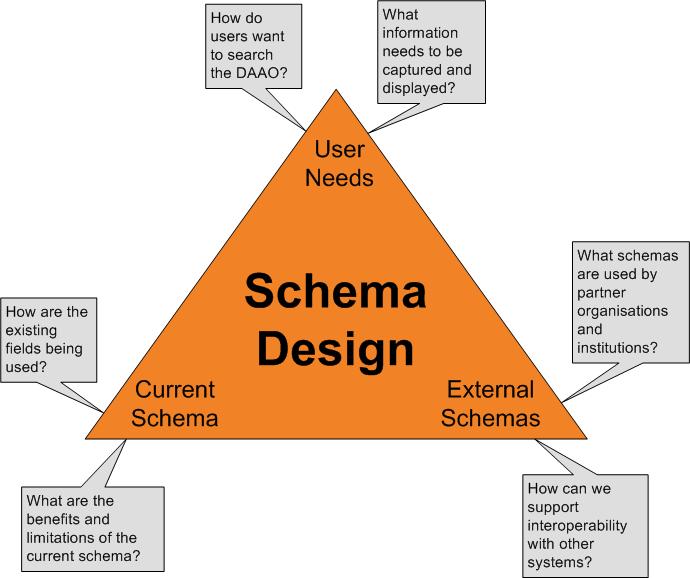Lately, the team’s collective mind has been really focussed on schema design. We have working through the LIEF’s brief which requires that our database have more information on exhibitions, roles ( like curators, clients, gallery directors and secondary roles, like teacher, administrator etc) to help with generating more profound research queries. We have of course also been thinking a lot about “design” as a content category and what particular data do we need in order to be able to describe in metadata fields the life of a designer.
From initial discussions with design researchers, it would seem that schematically- the life of designer has much in common with the life of an artist. Works (in the broadest sense of the term) are produced, often in collaboration with others. Careers are supported by others who collect, curate, commission works. This is great news as it means our definition of ‘a life’ as it is represented in our database is fundamentally robust enough to incorporate a designer. However there are of course some fascinating and fundamental differences that also emerge the more one thinks about design.
One of my favorite new fields that I am keen to workshop with people is ‘place of manufacture’. This field emerges as an interesting area in a globalising world of flows in which the client maybe in New York, the designer in Melbourne and the manufacture in korea. It is a classic Manuel Castells, ‘Rise of the Information society’ moment and a database that could capture that information would produce some valuable research ( and the most amazing visualisations!….).
Jo, our Data Manager, is well into her analysis of the metadata schema and I am refocussing my energies back on design this week in preparation for the Design workshop later this month. We were discussing our process and Jo helpfully used the word ‘triangulation’ to describe the analytical process. Jo and I share a passion for diagrams and so of course she has whipped one up which deftly represents a synopsis of the process, we are undertaking at present.
So basically Jo is working on that HUGE bottom part of the pyramid. I am working the top part ( and a bit of the left side) of the pyramid with various consultants, researchers and you.
I’ve also been looking at some of our existing content on designers. This on Hera Roberts is rather exemplary http://www.daao.org.au/main/read/5391 but if we scroll down what more information would we want in the details? How to build a database that speaks meaningfully to the history of design as well as its present.
Word the the week: SERENDIPITY. It seems to be happening all the time in the is project. Just as Olivia and I are thinking ‘wish we had something on artist run initiatives’ Amy Griffith and her database appear ( via Joanna Mendelsohn) Today just as i was thinking, I need to chat to a design researcher, I find myself on the phone with Juliette Peers from RMIT who has helpfully provided me some extremely useful grid references for measures of esteem, historical challenges, exemplary designers and some pointed case studies ( like ARUP or 3Deep) to explore edges of what we need to capture.

